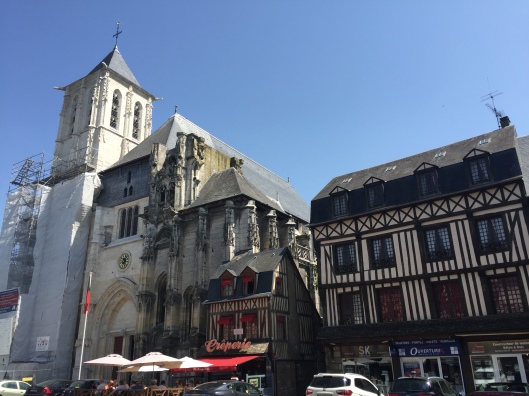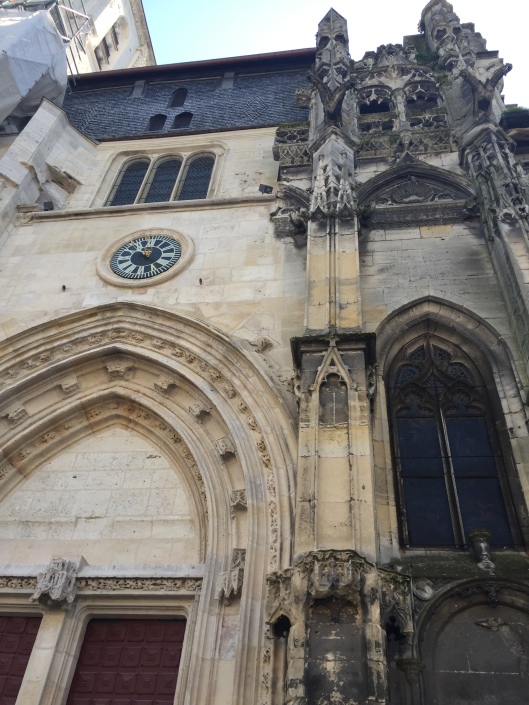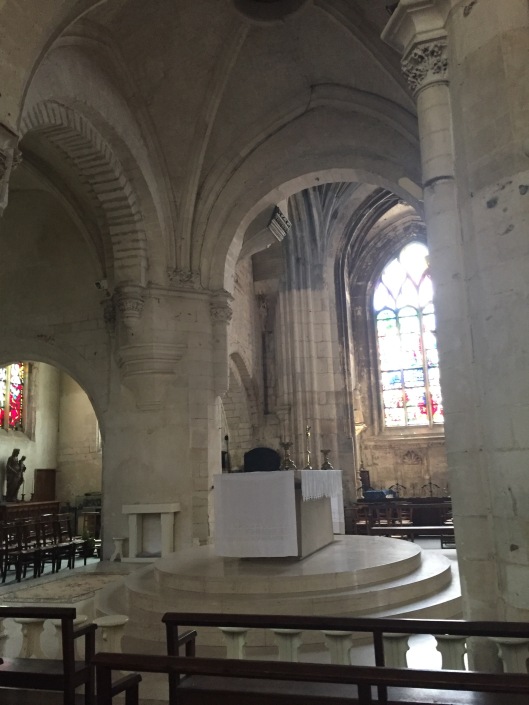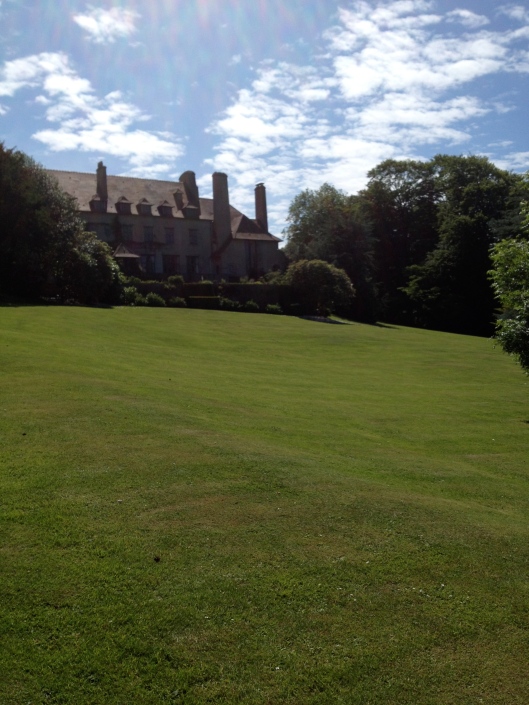Le Havre probably isn’t top of your list of things to do in Normandy. It certainly wasn’t top of mine–even though it’s on the Unesco World Heritage list. For me, Le Havre has always been a ferry port on the way to somewhere nicer, famous for having been bombed to bits by both sides during World War II.
But my ever adventurous husband kept encouraging me to go. He wanted to know where all the boats that pass by the end of our garden were coming from; and he was interested in seeing the largest container port, and second busiest overall port, in France. So we left behind the bucolic blossomy Easter week countryside and drove off in search of urban grit.

We arrived in a shower of rain, found parking, and ran into the nearest shelter, a large concrete doorway. I stumbled in, looked up, and then had one of those blinking-into-the-gloom moments that you get in the great medieval cathedrals like Notre Dame, Salisbury or Reims. Except here I was in a dramatic modernist space, the Eglise Saint-Joseph du Havre, made entirely from reinforced concrete. Built in the 1950s, the cathedral was designed by Auguste Perret, the architect who led the reconstruction of Le Havre after the war. It’s quite hard to describe the effect of stepping into this cathedral, and pictures don’t do it justice. The concrete is hard and cold and ugly, and yet the overall effect is uplifting and awe-inspiring. If you do one thing in Le Havre, go there.

The rain stopped, the sun came out (every day in Normandy contains about 7 days of weather in other places) and we headed towards the port, stopping along the way at the covered market for sandwiches and where we admired the traditional Easter bells and other chocolate on display.
Dotted around the port are some interesting sculptures, and this unusual Oscar Neimeyer designed volcano, which houses a cultural centre.
Then on to the Musée Malraux, known as MuMa, and its excellent collection of impressionist art in another modernist space that’s more attractive inside than out.
There are works by Boudin, Monet, Dufy, and many of the impressionists; I particularly liked the several portraits by Renoir, as well as the way the museum windows let the changing Normandy light right inside.
Along the seafront from the museum, boats were being taken out of dry dock by men with a small crane. We walked out along the long pier. Retired couples out for a stroll greeted us warmly, and a class of small student sailboats bobbed about at the end of the pier. Looking back was a rather lovely view of the port, smart new apartments, and the Perret cathedral tower.
Do look out for the seafront shop, La Belle-Iloise, which has walls and walls of these brightly coloured tins of sardines. What wonderful gifts.
Le Havre seems to me something like a beautiful easter egg hidden in an old bag, full of delightful surprises that it’s worth taking the time to savour.

 Take a moment to look inside this cool, ancient edifice. The oldest, Romanesque sections around the choir were built between the eleventh and thirteenth centuries.
Take a moment to look inside this cool, ancient edifice. The oldest, Romanesque sections around the choir were built between the eleventh and thirteenth centuries. The gate and north tower were constructed starting in around 1485, and the striking gothic nave with aisles and side chapels were build between 1505 and 1515 by Rouen architect Roulland le Roux, who also worked on Rouen cathedral. The south tower was never completed due to financial difficulties.
The gate and north tower were constructed starting in around 1485, and the striking gothic nave with aisles and side chapels were build between 1505 and 1515 by Rouen architect Roulland le Roux, who also worked on Rouen cathedral. The south tower was never completed due to financial difficulties.





















